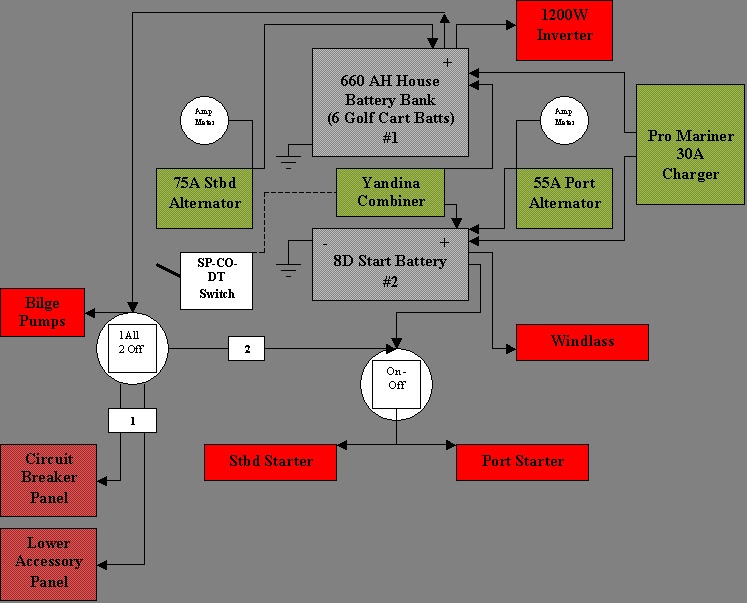I'm having some electrical work done on my boat and am using a local, highly recommended marine electrician. He told me that my current charging system is not the most efficient as is, and is recommending that it be changed.
He says that the best way is to have one alternator charge the start batteries and the other alternator charge the house bank batteries. I have a generator in case I can't run one of the engines for whatever reason, so theoretically I should never be "stuck" (that is obviously if the generator is working OK).
I've searched on the forum already for this answer and found some information, including the current ProIsoCharge thread but it's still not totally clear to me if what he recommends is best, or if it's even a typical charging setup (assuming I don't use the ProIsoCharge or something similar).
And, I figured it would be better to start a new thread rather than muddying up the waters on the ProIsoThread.
Sorry if this seems to be a dumb question, but your thoughts on whether what he is recommending is the best system, a typical system, or something else, would be greatly appreciated.
Thanks!
He says that the best way is to have one alternator charge the start batteries and the other alternator charge the house bank batteries. I have a generator in case I can't run one of the engines for whatever reason, so theoretically I should never be "stuck" (that is obviously if the generator is working OK).
I've searched on the forum already for this answer and found some information, including the current ProIsoCharge thread but it's still not totally clear to me if what he recommends is best, or if it's even a typical charging setup (assuming I don't use the ProIsoCharge or something similar).
And, I figured it would be better to start a new thread rather than muddying up the waters on the ProIsoThread.
Sorry if this seems to be a dumb question, but your thoughts on whether what he is recommending is the best system, a typical system, or something else, would be greatly appreciated.
Thanks!




